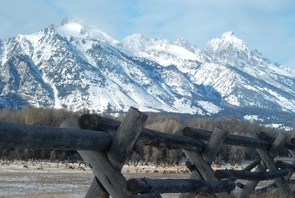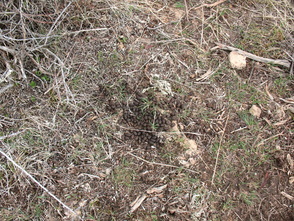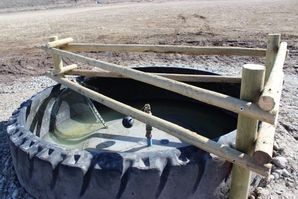Wildlife Projects

West Bank Wildlife Habitat Inventory and Linkage Assessment — Jackson Hole, Wyoming
This study used focal species (moose, elk, mule deer, black bear, ground squirrel, and raptors) to identify high value habitat and habitat linkage zones within a 7,400-acre project area. Vegetative covertyping, ungulate pellet group transects, wildlife sign plots, forest owl surveys, and raptor nest searches all contributed to the designation of zones of high, medium, and low habitat value for focal species. Maps depicting local and regional habitat linkages were developed using the information and data collected during the study. Parcels within the project area were prioritized for protection based on habitat value, location in relation to habitat linkages, and other attributes including size and existing development.
This study used focal species (moose, elk, mule deer, black bear, ground squirrel, and raptors) to identify high value habitat and habitat linkage zones within a 7,400-acre project area. Vegetative covertyping, ungulate pellet group transects, wildlife sign plots, forest owl surveys, and raptor nest searches all contributed to the designation of zones of high, medium, and low habitat value for focal species. Maps depicting local and regional habitat linkages were developed using the information and data collected during the study. Parcels within the project area were prioritized for protection based on habitat value, location in relation to habitat linkages, and other attributes including size and existing development.
Migratory Bird Nesting Surveys, Snake River Flood Control Project, Teton County, Wyoming
Biota was contracted by the USACE in 2014, 2015, and 2016 to perform migratory bird nesting surveys along various sections of flood control levees on the Snake River. The comprehensive nesting surveys of avian species protected under the Migratory Bird Treaty Act (16 U.S.C. § 701-12,) were performed during the nesting seasons within numerous and dispersed project areas identified by the US Army Corps of Engineers. Biota's wildlife biologists identified species by observation, sound, and sign and quantified overall utilization with documentation of exact location to inform project planning and implementation.

Wildlife Habitat Assessment — Victor, Idaho
A site assessment of wildlife habitat was conducted on a 123-acre parcel near Victor, Idaho. The purpose of this inventory was to document existing habitat features on the property and to study its actual use by wildlife in order to design an environmentally sensitive future development. As part of this project, a fecal pellet group survey was conducted to assess use of the property by ungulate species including deer, elk, and moose.
Winter Mule Deer Study — Jackson, Wyoming
This comprehensive mule deer study encompasses more than a decade of scientific data collection from 1979-1990 on East and West Gros Ventre Butte, adjacent to the town of Jackson, Wyoming. Study objectives included determining population size, age and sex structure, the general extent of deer winter range and migration routes, key wintering areas, determined human impacts on wintering deer, and investigated management options of mule deer and their critical range.
A site assessment of wildlife habitat was conducted on a 123-acre parcel near Victor, Idaho. The purpose of this inventory was to document existing habitat features on the property and to study its actual use by wildlife in order to design an environmentally sensitive future development. As part of this project, a fecal pellet group survey was conducted to assess use of the property by ungulate species including deer, elk, and moose.
Winter Mule Deer Study — Jackson, Wyoming
This comprehensive mule deer study encompasses more than a decade of scientific data collection from 1979-1990 on East and West Gros Ventre Butte, adjacent to the town of Jackson, Wyoming. Study objectives included determining population size, age and sex structure, the general extent of deer winter range and migration routes, key wintering areas, determined human impacts on wintering deer, and investigated management options of mule deer and their critical range.

Wildlife Management Plan — Douglas, Wyoming
A wildlife management plan was developed for a 125,000-acre ranch in eastern Wyoming. Because of the size of the property and extensive wildlife use that the area receives, the project occurred in several phases over the course of a couple of years. The first phase involved an assessment of existing range and habitat conditions and wildlife use during all seasons. The next phases involved extensive mapping of critical wildlife habitat, investigation of current management practices in these areas, and recommendations for pasture rotation, fencing, weed control, water source development, and habitat enhancements for game birds and ungulates.
A wildlife management plan was developed for a 125,000-acre ranch in eastern Wyoming. Because of the size of the property and extensive wildlife use that the area receives, the project occurred in several phases over the course of a couple of years. The first phase involved an assessment of existing range and habitat conditions and wildlife use during all seasons. The next phases involved extensive mapping of critical wildlife habitat, investigation of current management practices in these areas, and recommendations for pasture rotation, fencing, weed control, water source development, and habitat enhancements for game birds and ungulates.
